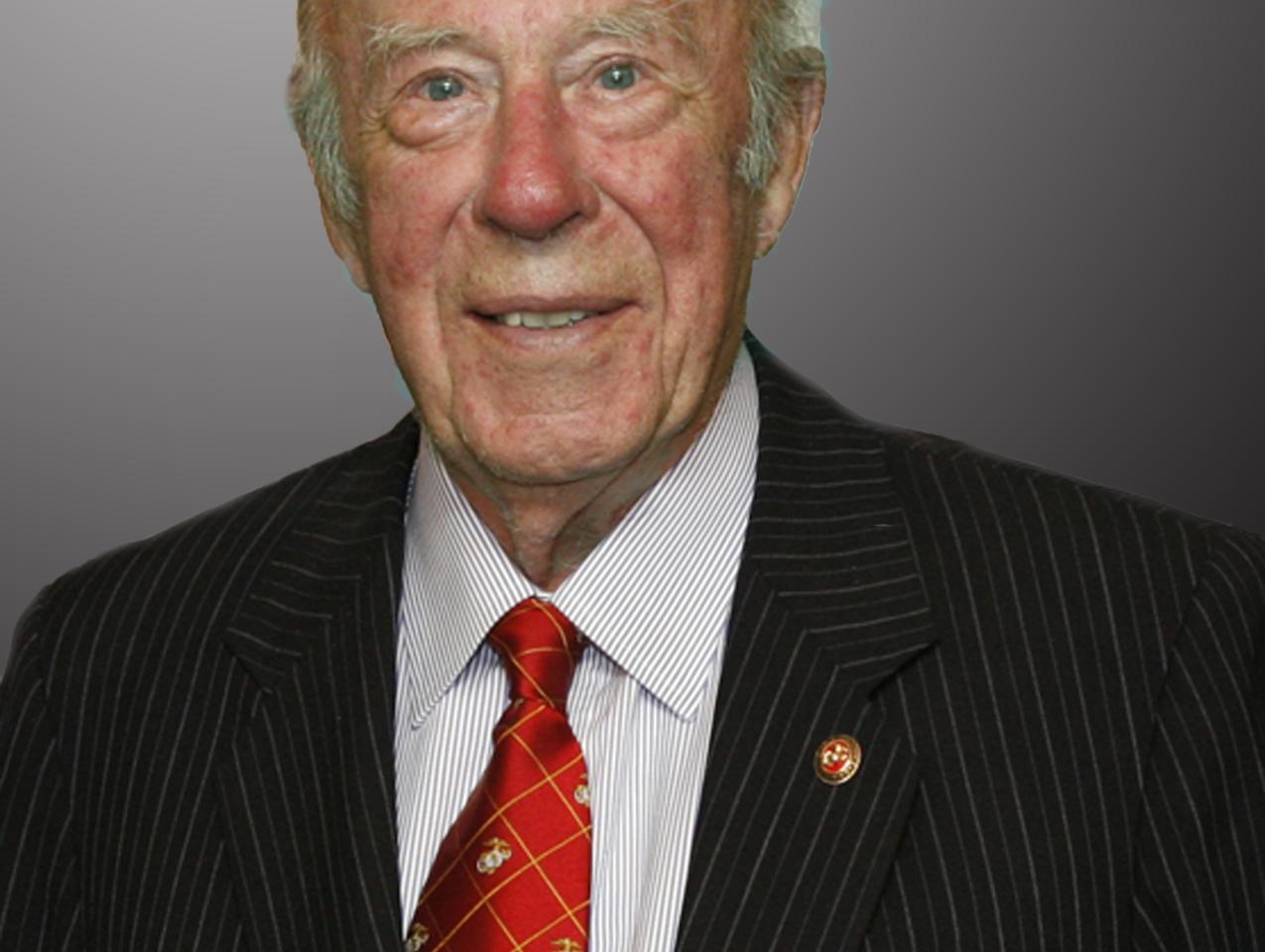- Economics
- Energy & Environment
- International Affairs
- US Foreign Policy
Over the past four decades, the United States has been on an energy roller coaster that has landed us, unnecessarily, in a place that is dangerous to our economy, our national security, and our climate.
In 1959, President Eisenhower, concerned that overdependence on imported oil would be a threat to our national security, imposed a quota of 20 percent of consumption on imports. Today we import over 60 percent of the oil we use.
And causes for concern have increased. The economic impact of dependence on foreign oil has always been apparent, as economic recessions have invariably followed significant oil price increases. President Eisenhower’s concern about national security has been greatly heightened in recent times because high prices have funneled large flows of revenue to regimes that do not wish us well.
Now the issue of climate change has been added to our list of concerns. Recognition of the environmental risks created by greenhouse gases has heightened apprehensions about our heavy reliance on oil. And it has brought concerns about the use of coal, which produces much of our electricity, into the policy mix.
Now, starting in 2009, we have another chance to get it right—to construct an energy policy that meets these issues in a comprehensive way.
Along multiple dimensions, the energy industry is almost unfathomably large. Reasonable estimates indicate that demand for energy may well grow by about 35 percent or so by 2030. Scalability, an important attribute for any new energy development, can apply to something big, but also to something small that is readily replicable. Over time, significant change is clearly possible. Energy intensity—energy consumed per dollar of GDP—has declined by about 1 percent per year over the past two hundred years, but in response to the oil-price shocks of the 1970s, the rate of decline in energy intensity has nearly tripled.
An effective effort to reduce CO2 emissions or reduce revenues to oil-producing countries must include the developing world. The challenge is that China, India, and other developing countries see limits on CO2 emissions as limits on economic growth, and, understandably, they will not accept such limits. Efforts to reduce oil consumption and CO2 emissions must be cost effective if they are to be adopted in the developing world. Over the long run, technology could have a great impact. Cost-effective technology will naturally be adopted by market forces, without government policy, on a global basis. Therefore, research into cost-effective conservation measures and clean energy has the potential for significant payoffs.
Energy is a large and critical component of the economy. Getting energy policy wrong and adopting unnecessarily costly, economically inefficient policies will have a significant negative impact on our standard of living. This means that continued efforts to find and develop new sources of oil and gas are essential. And, insofar as the United States is concerned, efforts should be made to develop our own reserves, consistent with proper environmental standards.
Policy Options
The United States should use policies to set conditions for the market that maximize the possibility of desirable results. The marketplace has long demonstrated its superior ability to sort out low-cost, high-quality providers of energy and other commodities, so policies should be designed to promote the operation of the market and fight against the effectiveness of anticompetitive forces such as OPEC.
At the same time, the marketplace by itself does not take into account important considerations such as the costs of pollution and climate change. These costs should be assessed in such a way that the market recognizes them. The problems of national security that arise from unreliable energy sources are an externality to the market, so ways must be devised to deal with these problems. And the market does not usually support basic research because market participants cannot firmly capture the benefits of the research. Commercial development, of course, is another matter. So nonmarket sources of support for basic research are needed, and the subtleties of interaction between research and development should be understood—and fruitful means identified—to ease that transition.
Here are seven suggestions that, if adopted, should give the United States a sustained and effective energy policy.
Support Basic Research on Energy Generously and on a Sustained Basis
An essential attribute when considering energy issues is the ability to think long and to think creatively. We need an energy policy that capitalizes on the traditional American strengths of ingenuity and innovation. Inventive juices, once released, will yield important contributions to solving our energy issues.
Immediate results are desirable wherever possible, but real game-changers will take some time to emerge and develop. They will most likely result from a heavy emphasis on basic scientific research related to energy. Government and private foundations need to take primary responsibility for generous and sustained funding of basic research, which is probably the most important undertaking of any prospective energy policy. Recent efforts by major corporations that have joined together to sponsor basic research demonstrate that they understand its fundamental importance. Sustained corporate support will be an essential source of the game-changing innovations that almost surely lie in our future.
Use Energy Efficiently
Attention to the abundant ways in which energy can be used more efficiently will produce immediate, as well as long-term, benefits. The evidence is overwhelming that people respond to clear incentives coupled with easily understood information. Here are some examples:
- Compelling evidence shows that there is substantially more investment in energysaving devices in homes occupied by owners as compared with homes occupied by renters. A policy framework should be designed that offers renters the same incentives as owners to invest in household energy efficiency.
- Congestion pricing can work by spacing traffic on bridges and highways and changing the flow of traffic into cities. Results would include savings in time for drivers who can avoid traffic jams and substantial savings in energy and greenhouse gases by reducing the number of idling vehicle motors.
- Existing technology allows residential or commercial electricity use to be displayed in real time. By varying the price of electricity according to the time of day, it can be used more evenly, thereby saving production costs and reducing the pollution caused by unnecessary production.<
Establish a Price for Carbon Dioxide Emissions
The production of carbon dioxide creates a significant risk of man-made global warming, a social cost that is not taken into account naturally by market forces. If this cost is imposed by government on all participants, the playing field will be leveled and the production of carbon dioxide simultaneously reduced.
Currently under debate are two alternate methods for managing carbon dioxide emissions: a carbon tax and a carbon cap-and-trade system. These concepts share many of the same advantages but also suffer from many of the same problems. For example, a carbon tax could operate with exemptions for a given industry or company in much the same way that credits are given under a cap-and-trade system of taxation. Methods of granting offsets could be used in either case and have similar risks of fraud and abuse. These methods could be imposed at varying stages, from initial production of the energy source to the point of use. In either case, ease of administration argues for imposition at the upstream end.
Most of us are strongly in favor of the carbon tax alternative on the grounds that it is simple, straightforward, and less subject to fraud and manipulation. Those who support the carbon cap-and-trade tax system point to the relative ease of its adoption from a political standpoint. Yet this system, recently proposed by President Obama and now embedded in an energy bill passed by the House in June, has been met with considerable hostility by many members of Congress. Another danger is the potential disillusionment that may result from the kinds of abuses of the emission trading system that have emerged elsewhere. As New York Times columnist Thomas Friedman cautions, “Cap-and-trade will be managed by Wall Street. If you liked credit-default swaps, you’re going to love carbon-offset swaps.” This point is underlined by John M. Broder in the New York Times: “Cap and trade, by contrast [with a carbon tax] is almost perfectly designed for the buying and selling of political support through the granting of valuable emissions permits to favor specific industries and even specific Congressional districts. That is precisely what is taking place now in the House Energy and Commerce Committee, which has used such concessions to patch together a Democratic majority to pass a far-reaching bill to regulate carbon emissions through a cap-and-trade plan.” So politicians are taking their bite out of the cap-and-trade system even before Wall Street traders get their chance.
Since either method imposes costs on the U.S. economic system, the desire to remain competitive includes a built-in expectation that other countries will take similar action. The costs of adjustment to either policy will be substantial. To minimize these costs, either system should be phased in through an announced schedule that is periodically revisited. For example, a carbon tax might be introduced at a low price and then be phased in through gradual increases until some agreed-upon maximum is reached. At each step, an assessment of costs and benefits should be made.
In either case, since issues involving the appropriate level of government spending and taxing differ from issues of climate change, the system should be designed to operate on a revenueneutral basis. Using government revenues from a carbon cap or carbon tax to fund unrelated programs confuses the issue. Therefore, any revenues raised from such a tax should be offset by an equal reduction in other types of federal taxation.
Deal with Volatility in the Price of Oil
Extreme volatility in the price of crude oil imposes economic costs and results in a kind of on-off switch for the development of alternatives. Exploration and development throughout the world, which raise the capacity to produce, tend to keep prices low and volatility under control.
Another method of dealing with volatility would be to impose a wedge fee that would come into play whenever the market took the price of crude below some identified price per barrel This would provide a target for potential competitors for crude oil. As in the case of the carbon tax or the cap-and-trade tax, this wedge-fee idea should be implemented on a revenue-neutral basis.
Get Control of the Nuclear Fuel Cycle
Nuclear power plants offer the attractive attribute of producing low levels of carbon emissions, if any. The imposition of a carbon tax, therefore, will put nuclear power on a more even footing with coal-fired or other forms of power than is otherwise the case. With this incentive, we can expect that the use of nuclear power will expand, as it already has done in China, France, and some other parts of the world.
Nevertheless, nuclear power presents a special security challenge. A country that has the ability to enrich the uranium needed for a power plant can further enrich it to the level needed for a nuclear bomb. The spent fuel from a nuclear power plant can be reprocessed into plutonium, which, in turn, can provide the raw material for a bomb. The nuclear fuel cycle thus presents a significant security challenge. A way must be found to control the fuel cycle, putting every phase of it under international supervision and control. Fortunately, constructive steps are under way on this challenging undertaking, but success will require an extraordinary degree of cooperation among nations.
Prepare for a Changing Climate
Many who predict the consequences of global warming warn of a dire future; some think we have already passed the point of no return, even assuming that consequential efforts will be made to deal with the carbon dioxide issue. This expectation of severe consequences in the near future means that methods to mitigate the effects of climate change must be studied and developed on an urgent basis, with preparations made to initiate them when and if necessary.
One such effort is geoengineering, which approaches the problem in a unique way. Nature cools the planet every time a volcano erupts by putting particles in the atmosphere that reflect the sun and mitigate its warming impact. It is possible to imagine scientists replicating such a cooling phenomenon. Several other geoengineering proposals now being studied could serve as last-ditch backstops against runaway climate change. Significant research would be required to ensure that geoengineering would have a beneficial environmental impact without damaging side effects. To prepare that insurance policy, investment is needed today to study and test possible geoengineering systems and to develop some international norms about when such systems might actually be deployed.
Work Constructively with the Developing World
Even a casual look at the economic, national security, and environmental issues connected with energy leads to one obvious major point: the economic development of lower-income-per-capita countries now under way on a large scale will have a significant impact on successfully achieving our energy goals. Efforts to persuade China, India, and other countries to agree to limit their greenhouse gas emissions are understandably greeted with great resistance. These countries, which are just now beginning to see their standards of living improve, regard any agreement to limit emissions as an agreement to limit economic growth. It is likely that anyone in their shoes would take the same attitude.
The key to effective work with other countries must therefore be the discovery of new ways to produce and use energy. Goals, incentives, and disincentives have their place. In the end, however, breakthroughs in the science and engineering of energy production and use are the keys to a more economically and environmentally sustainable energy future. That is why strong and sustained support for research and development tops our list of energy policy suggestions.
















